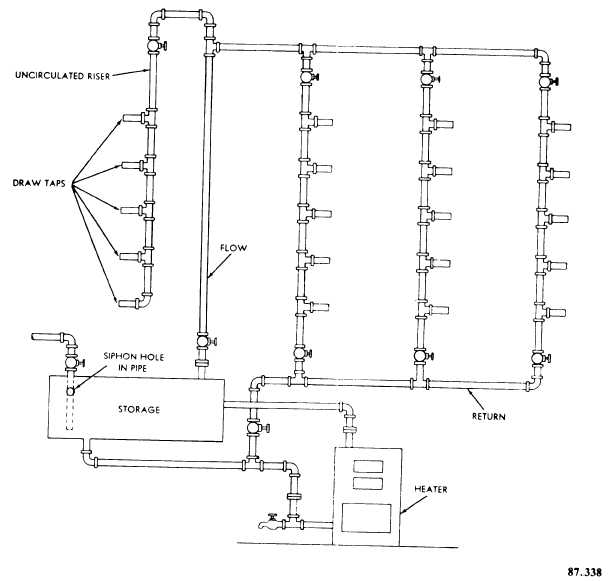of copper has become the most popular because of copper's ability to resist corrosion that increases in proportion to the temperature of the water. Sizing of the piping for a hot-water system is done the same way as for a cold-water system.
The layout of a hot-water system is designed to carry heated water from a storage unit to plumbing fixtures. Installation planning begins with the water-heating device and a main supply line from that device. The system should be graded to a centrally located drip cock near the water heater to allow for draining the system when maintenance is required. Water for the individual fixtures located throughout the facility is taken off the main hot-water supply by risers as needed. Each fixture riser should have a valve to make repair work easier.
Buildings of considerable floor area or of multifloor construction have the added problem of supplying hot water to the fixture as soon as possible after the tap is opened. In a one-pipe system (such as that used for cold-water supply), a lag occurs from the time the hot-water tap is opened until the heated water travels from the the water-heating device to the fixture. To overcome this lag, a circulating water supply system is often used. (See fig. 7-2.)
The circulating supply system is a two-pipe system in which hot water flows from the heating device through the main fixture risers and returns to the heating device. This type of looped system

Figure 7-2. - Hot-water circulating supply system.
Continue Reading